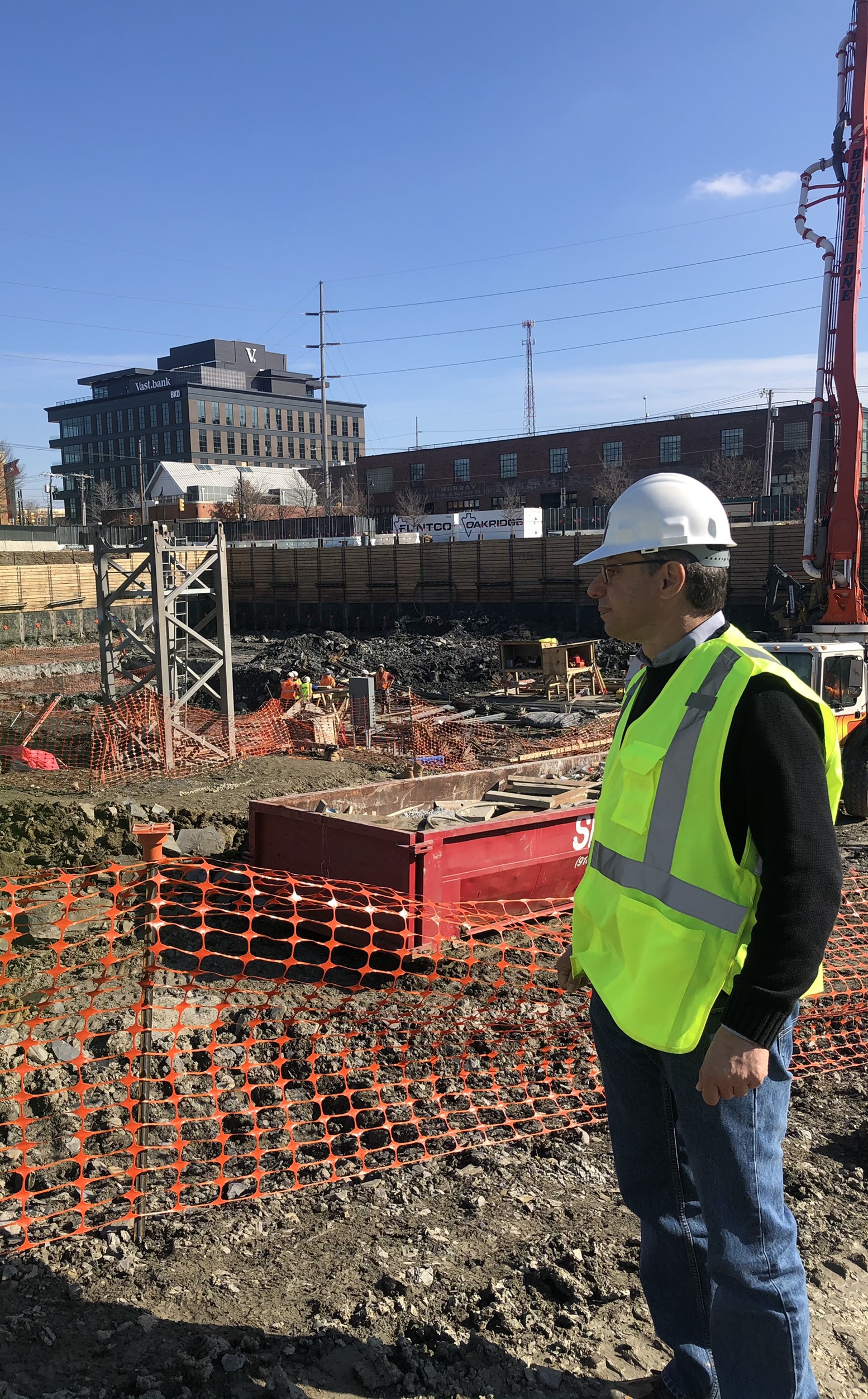As engineers, we know what we like to see when it comes to contractors, but the engineer-contractor relationship works both ways.
What qualities do contractors value in their engineers?
To find out how engineers can improve their construction administration skills and relationships and help construction projects run more smoothly, we went to the experts.
Over the years, Wallace Engineering has developed strong working relationships with Flintco and Nabholz, local general contractors near our Tulsa headquarters. We have a lot of respect for how they approach their work and for their knowledge of the industry, so we sat down with John Cianco, Construction Director at Flintco; Joshua Rhea, Senior Project Manager at Nabholz; and Jordan Knutson, Project Manager at Nabholz, to get their insights on what qualities they appreciate in the engineers they work with.
1) A good engineer exhibits a team player attitude.
Survey says....contractors strongly value engineers who take a “team player” approach to construction administration.
Of course, both sides would love a project to go perfectly without a hitch; however, there’s a decidedly human element in construction. Mistakes happen. Misinterpretations come about. Unforeseen conditions arise. To ensure these obstacles don’t derail a project, contractors and engineers need to be on the same team - not adversaries.
Ciancio says contractors appreciate when an engineer reacts to mistakes or misinterpretations on the job site with a “that’s not what we were looking for, but here’s how to fix it” approach, as opposed to coming at it in a more condescending, condemning manner. He values engineers that are “part of the solution” and, when possible, are at least willing to explore creative ways to solve problems, instead of immediately jumping to “remove and replace."
“You never want to have a mistake, but when an opportunity presents itself to have someone think outside the box and come up with a creative solution - that is a great engineer,” says Ciancio.
Although the financial aspect of field fixes will need to be sorted out, focusing efforts on solving the problem at hand will always be more productive than pointing fingers. Being a team player will help develop a good working relationship with the contractor and may even give the engineer a chance to shine by coming up with a unique solution.
"Construction is hard enough as it is without adding the burden of a difficult design team member. At the end of the day, we all want to build a great building, and helping one another out is what it's all about," says Rhea.
2) A good engineer is accessible and responsive.
Job sites are fast paced environments, usually with multiple phases underway at once. But all jobs have a “critical path,” or an order of important items that need to be finished before progress can move forward. A hiccup in one of these can grind a project to a halt.
Good contractors will strive for foresight and early communication as much as possible, but sometimes emergencies pop up.
“Time is money,” notes Ciancio. “Sometimes things happen where you need an answer quickly, so accessibility is great.”
Accessibility and responsiveness can range from jumping on emergency RFI’s to simply reviewing and returning submittals promptly. Keep in mind that quick turnarounds not only benefit the contractor, but help the client and the project’s bottom line as well.
“Responsive, timely help. Can’t stress that one enough,” says Ciancio.
3) A good engineer considers constructability.
There is sometimes a disconnect between development of details in Revit or CAD and actual installation. What looks good to an engineer on paper may be difficult and costly - or even unfeasible - for the contractor in the field. Contractors appreciate when engineers take constructability into account, or at least show interest, ask questions, and take criticism for application on future projects.
Here are some ways engineers can consider constructability in their designs:
Understanding sequence of work
In Knutson's experience, an engineer's details might require an unusual or impossible sequence of installation. Asking questions and making site visits to all types of projects can help engineers understand logistics and sequence of construction, which can translate into more constructable details down the road.Considering the modular nature of construction materials
Cianco notes that certain building materials come in standard sizes. For instance, a standard sheet of plywood is 4ft x 8ft, and a standard CMU block is 8” high x 16” wide. Though sometimes unavoidable or dependent on architectural constraints, designing with coursing dimensions or dimensions that reduce trimming or field modifications of building materials saves time, labor, and money and reduces chances for errors in the fieldUsing subcontractor knowledge
"Installers have a lot of knowledge and can be used as tools," explains Knutson. Tapping into the field experience of the subcontractors and combining it with an engineer's technical knowledge can be the ticket to efficient designs.
On a recent project, Knutson's team encountered an unforeseen issue with the installation of an elevator hoist beam. Instead of producing a detail that may or may not have been efficient, the engineer went directly to the steel erector for insight on the easiest installation method, and then detailed a fix based on the subcontractor's insights. The end result was a quick, constructible solution that saved a lot of time.
4) A good engineer keeps it simple.
After finishing a set of drawings or details, the engineer should take a step back and look at it from a contractor's perspective. Is there enough information on each detail? Are any important instructions buried? Are the drawings and details clean and easy to follow?
At the end of the day, it’s the contractor’s job to complete the project per the construction documents. However, engineers can help ensure design intents are understood by striving to provide drawings and specs that are detailed, but don’t overload the contractor with fancy jargon, excess information, or convoluted references.
“Remember that people putting it in place are not engineers - put it into layman’s terms,” suggests Ciancio.
For an engineer, the engineer-contractor relationship starts long before the construction administration phase. Keeping constructability and conciseness in mind during design are the first steps to getting a construction project off on the right foot. Once the drawings are sent out, the focus should shift to being a responsive team player, with the ultimate goal of providing the best product possible for the owner.
Construction administration and communication with the contractors in the field are often-overlooked aspects of an engineer’s job, but hugely important to the success of a project. Learning how to interact with contractors and view things from their perspective can lead to smoother construction projects and also improve future designs and professional reputation.
Next week, we’ll wrap up our series on engineer-contractor relationships by showcasing a recent, high-profile project in Tulsa that exemplified top-tier teamwork. Find out what can be accomplished and what kinds of obstacles can be overcome when all members of the design and construction teams come to the table ready to work together with a single goal in mind.



There are no comments.